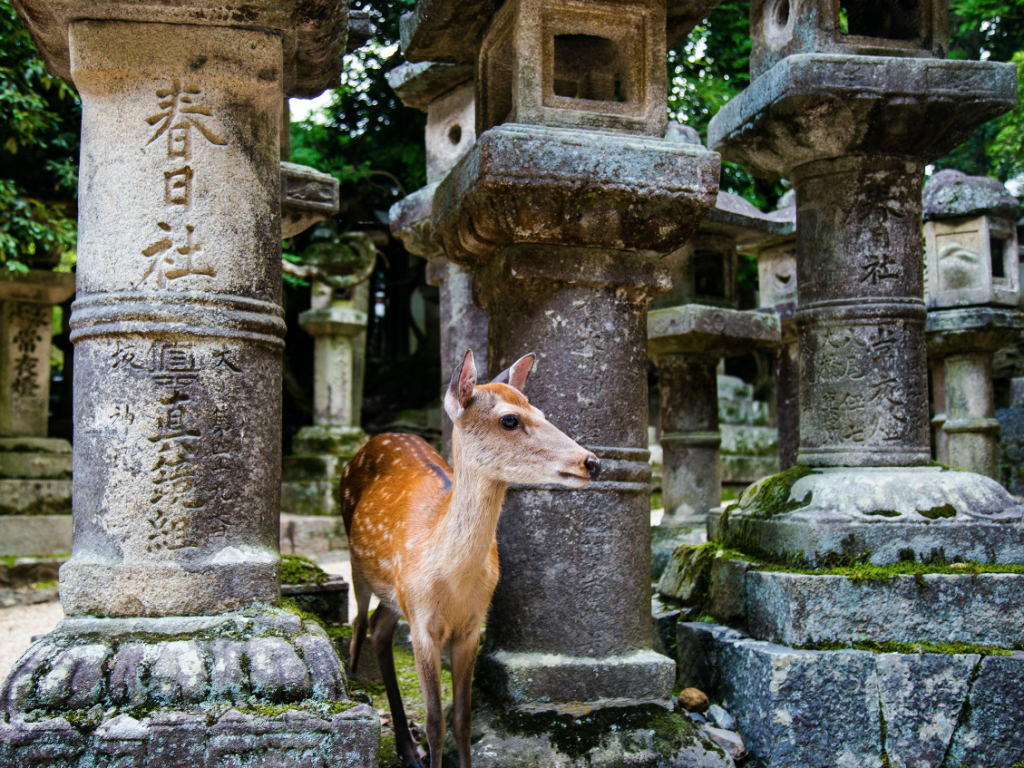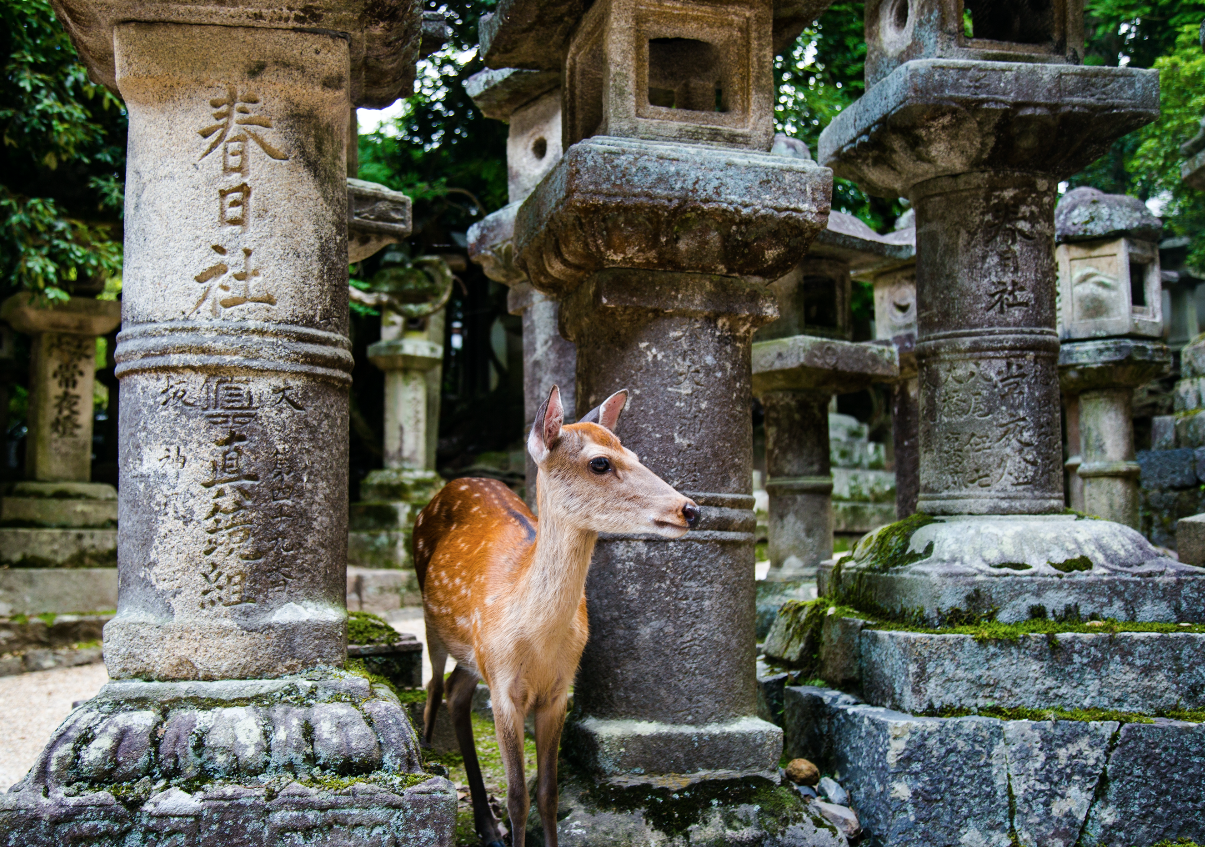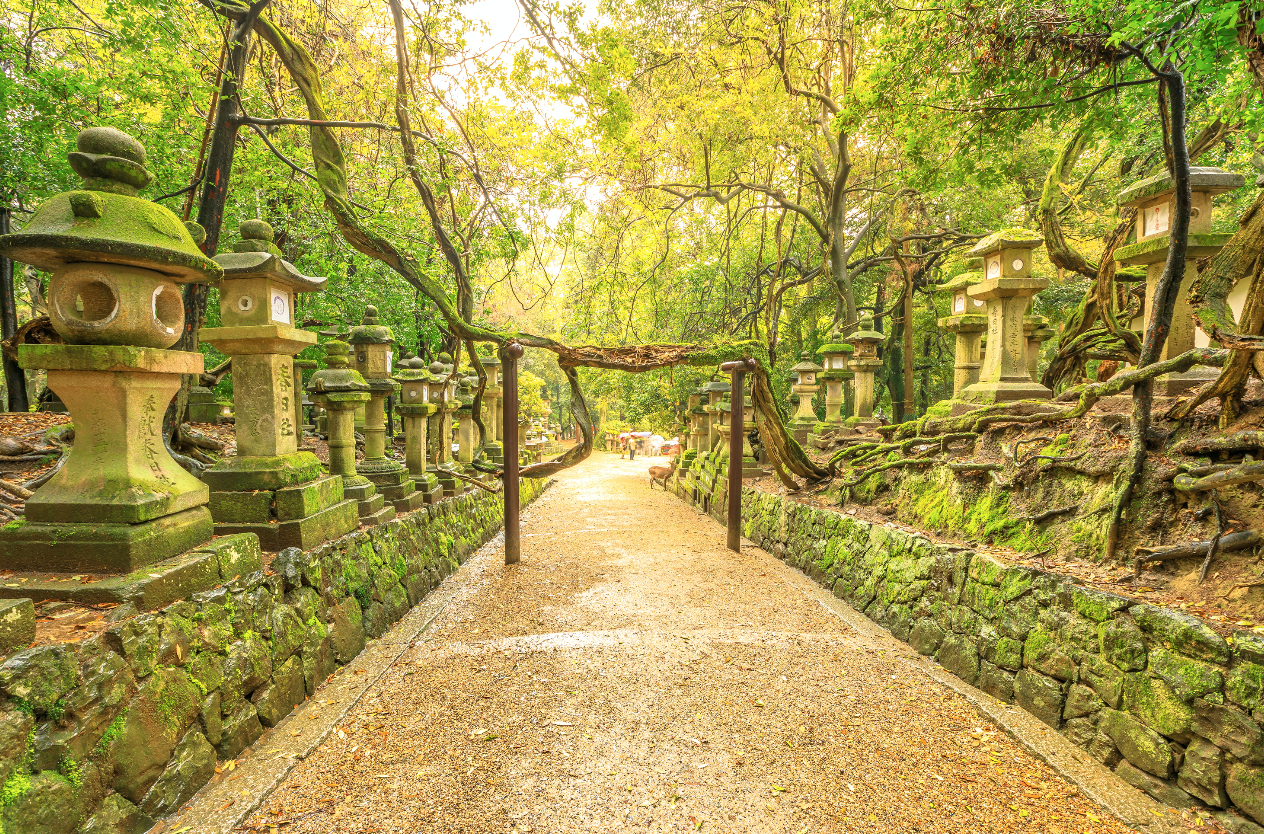Plenty of people have heard of the city of Nara, but what they may not know is that between 710 and 794 it served as the capital of Japan. Even today, 1,300 years later, it remains one of the most important metropolises in western Japan, alongside Kyoto and Osaka. But not because of its political influence. These days, Nara is primarily known as a tourist destination. It’s home to so many attractions you won’t be able to enjoy all of them in a single day, but if 24 hours in Nara is all you’ve got, here’s how you can make the most of your stay in Japan’s old capital…
8AM: Todai-ji
We start our day at the Kintetsu-Nara Station, hopefully preceded by a hearty breakfast because there’s going to be a lot of walking. From the station, take a 15-minute stroll towards the famous Tōdai-ji temple to say hello to the Great Buddha of Nara housed in the temple’s Daibutsuden hall. Both the statue and its home are noteworthy, being the world’s largest bronze statue of a Buddha and the world’s largest wooden building respectively. The Buddha, a representation of Vairocana, weighs about 500 tons and measures nearly 15 meters in height (close to 50 feet). Fun fact: According to X-ray scans, the statue contains what’s believed to be the tooth of Emperor Shomu in its knee.
Adults ¥600, elementary students ¥300, www.todaiji.or.jp
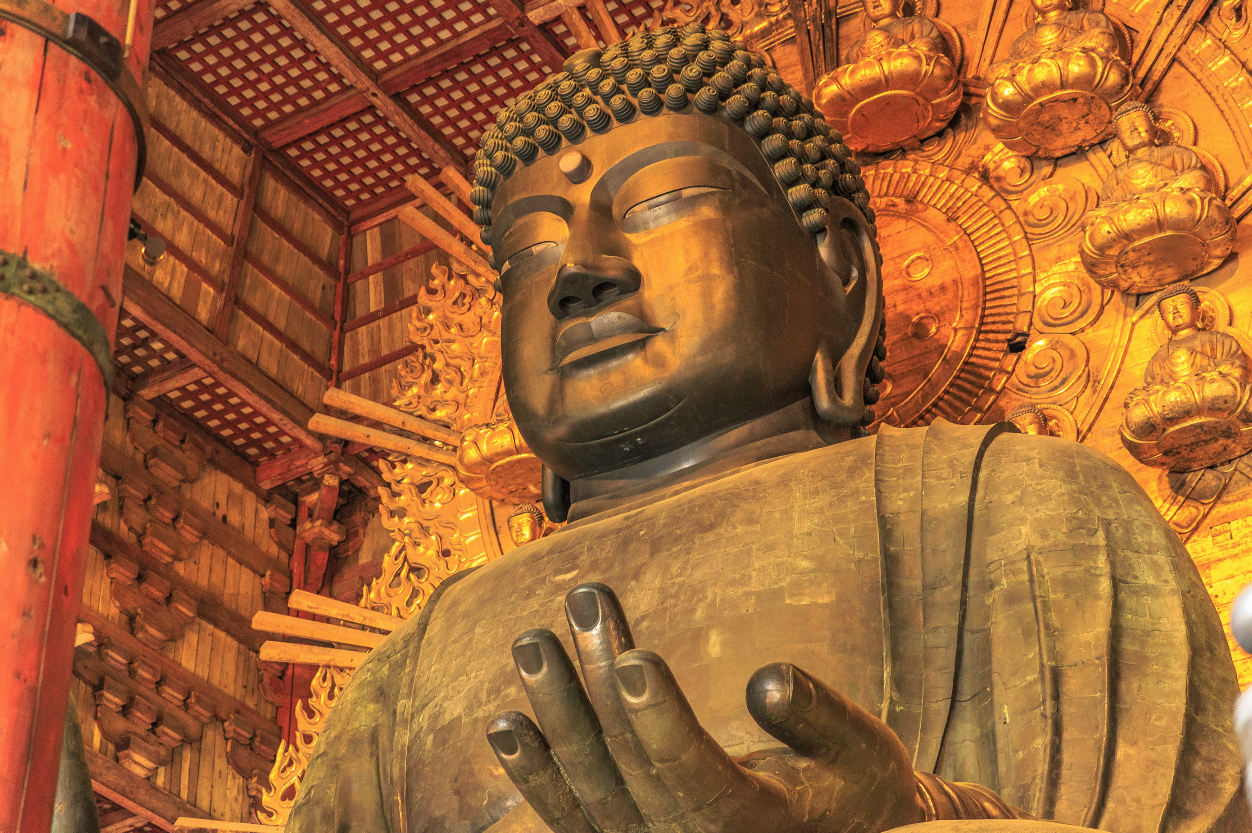
9AM: The Deer of Nara Park
The Tōdai-ji grounds cover most of the northern part of Nara Park, which, as luck would have it, is our next destination. Originally established in the late 19th century, the park is a spacious green area full of many places where you can enjoy and even feed nature. Today, the park has become home to hundreds of deer that are free to roam around the place. Their population is estimated to be anywhere between 1,200 and 1,500, and most of them expect you to feed them with deer crackers (shika senbei) that you can buy from local vendors. Fair warning, though: if you don’t plan on feeding them, it’s best to stay away from the deer because, cute as they are, they’ve been known to bite when angered.
10:30AM: Manyo Botanical Garden
Located just a few minutes from Tōdai-ji lies a quiet refuge from the hungry deer of Nara Park. It’s called Manyo Botanical Garden and it’s possibly the most poetic place in all of Japan. Apparently, the garden contains over 300 plants mentioned in Man’yoshu, a compendium of Japanese poetry compiled in the mid-eighth century.
Adults ¥500, children ¥250
11:45AM: Kasuga Taisha and the Kasugayama Primeval Forest
After visiting one of Nara’s most important Buddhist temples (Tōdai-ji), it’s only fair that you should pay your respects at the city’s most important Shinto shrine. As luck would have it, the Manyo garden is located right within its precinct. Kasuga Taisha was established in 768 by the Fujiwara clan and is known today for its many stone and bronze lanterns, all of which are lit during festivals held in early February and mid-August.
Fun fact: The deer of Nara Park are thought to be sacred messengers of the gods residing within Kasuga shrine. But to feel the presence of the Kasuga gods without the risk of getting bitten, look no further than the back of the shrine and the Kasugayama Primeval Forest. The old-growth forest, left largely undisturbed by human activity, spans about 250 hectares where you can walk and enjoy the splendor of nature.
Free entrance (except the museum and the shrine’s inner area), www.kasugataisha.or.jp
1PM: Shopping and Lunch at Higashimuki
From Kasuga shrine, we take a 20-minute walk westwards to Higashimuki Shotengai, a roofed shopping district. Higashimuki is Nara’s busiest shopping area and for good reason. Most of the shops here, ranging from clothing retailers to restaurants, cafés, toy stores and so on, are family-owned establishments with years of history behind them. It’s the perfect place to buy a few souvenirs and finally get some food. You will find all sorts of cuisine at very affordable prices at Higashimuki, from Western-style dining to traditional Japanese dishes like mochi rice cakes or narazuke, traditional Nara vegetables pickled in yeast left over from the production of sake. Also worth recommending are Nara’s manju – delicious steamed buns filled with sweet red bean paste, and handmade somen noodles, which used to be a popular court food.
3:30PM: Horyu-ji
Walk over to Nara Station and catch the Yamatoji Line train going towards Oji or Osaka, getting off at Horyuji Station. After a 20-minute walk, you will arrive at Horyu-ji (literally “Temple of the Flourishing Law”). A veritable time machine, it preserves Japanese culture and architecture from over 1,300 years ago. Today, it contains some of the most important Buddhist treasures and structures in all of Japan, most notably its iconic Five-Story Pagoda, the oldest such structure in the whole country, dating back to the year 607. Horyu-ji is a quiet place but it breathes history and religious significance, and a walk among the temple complex feels like literally stepping into the past.
Adults ¥1,500, children ¥750, www.horyuji.or.jp
5PM: Naramachi
After a train trip back to Kintetsu-Nara Station, we take another short walk to Naramachi, Nara’s old merchant district. Here, enjoy expertly preserved historic buildings now acting as restaurants, shops, and museums. After a long day of temple and shrine hopping, it’s a good place to take a leisurely walk and let oneself get lost among the historic streets.
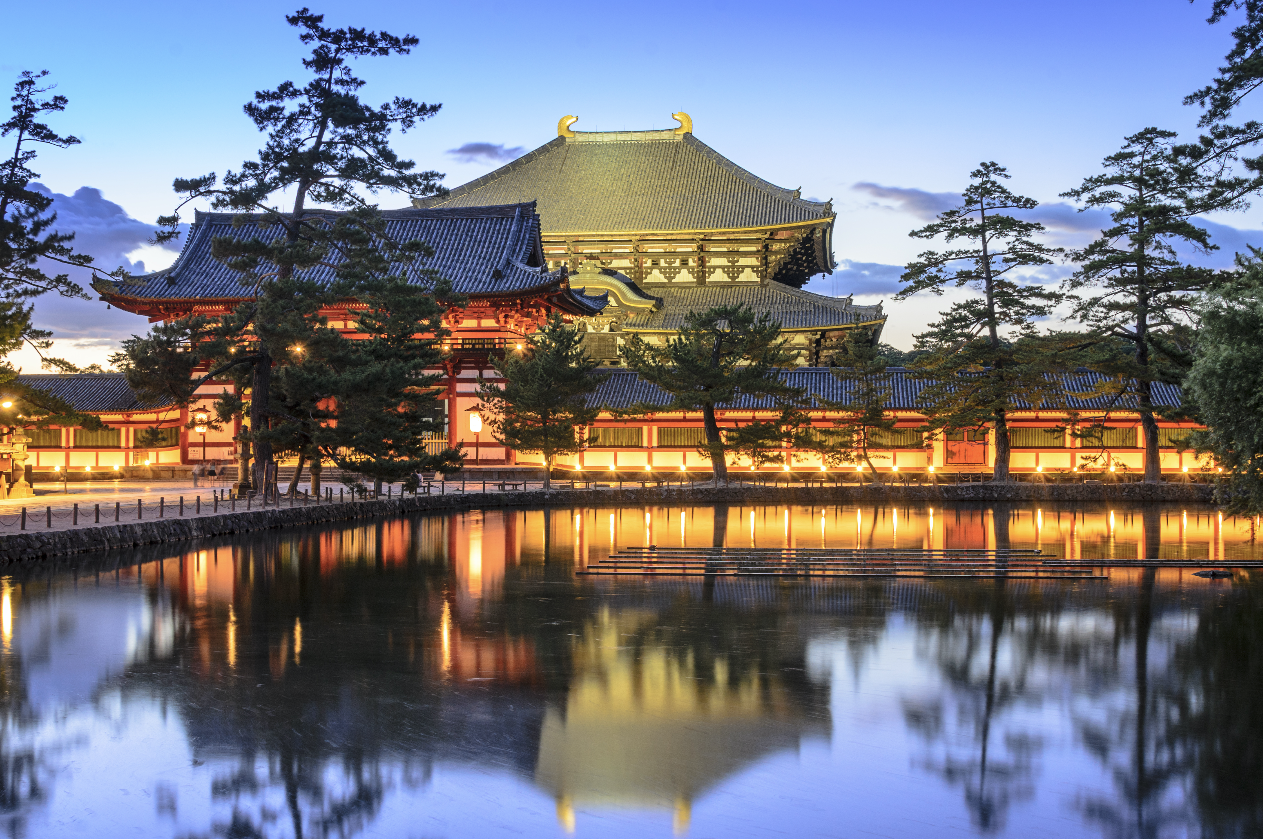
7PM: Dinner and a Little Something
Nara is proud of its grilled eel, and for good reason, so we recommend finishing up your day with some unagi. But whatever you end up getting for dinner, be sure to order a glass of sake with it. Nara is known as the birthplace of modern sake and boasts many breweries with long histories. Almost all sake produced in the region is made from local underground water sources and rice and yeast produced in local Nara highlands. Some restaurants and breweries even offer sake tastings for as low as ¥500. Keep an eye out for them and end your Nara daytrip with a satisfying sway in your step.

